January 18, 2018
Rustling Up Roses and Design Ideas
Ice skating, anyone? In Austin, this is the closest we’ll get, and only if you’re bird-sized!
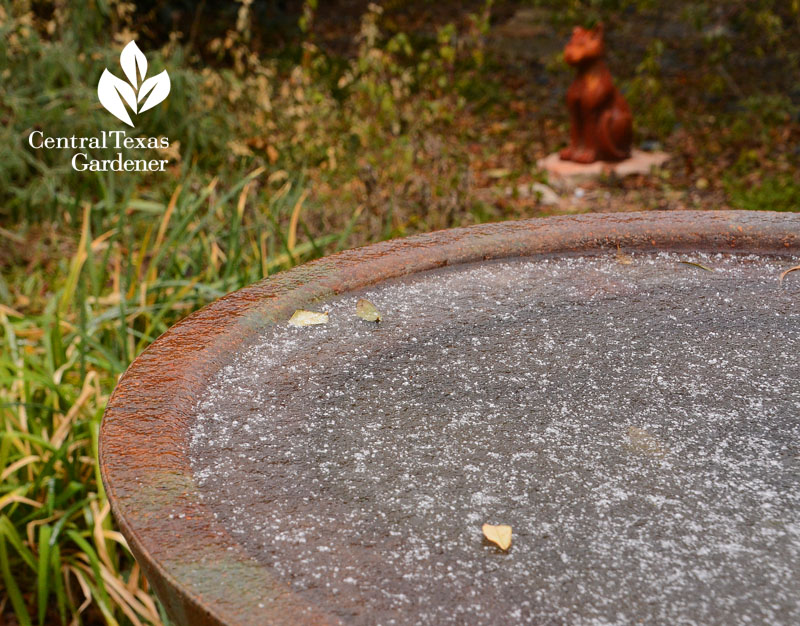
SO, does ice on plants protect them? Nope: at least not in Central Texas gardens in our brief shut-down-the-city events.
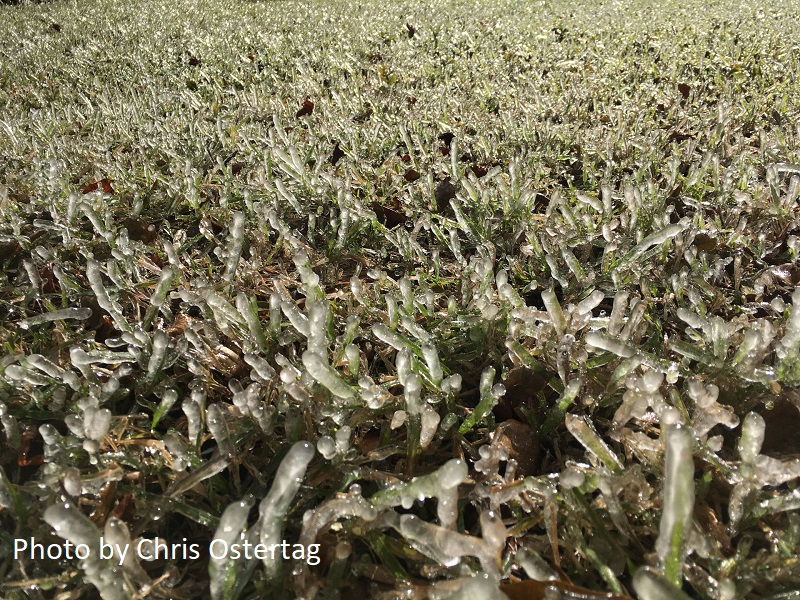
Daphne explains the physics behind ice formation.
Fortunately, in Texas, we don’t have to protect roses, like ‘Marie Pavie’.
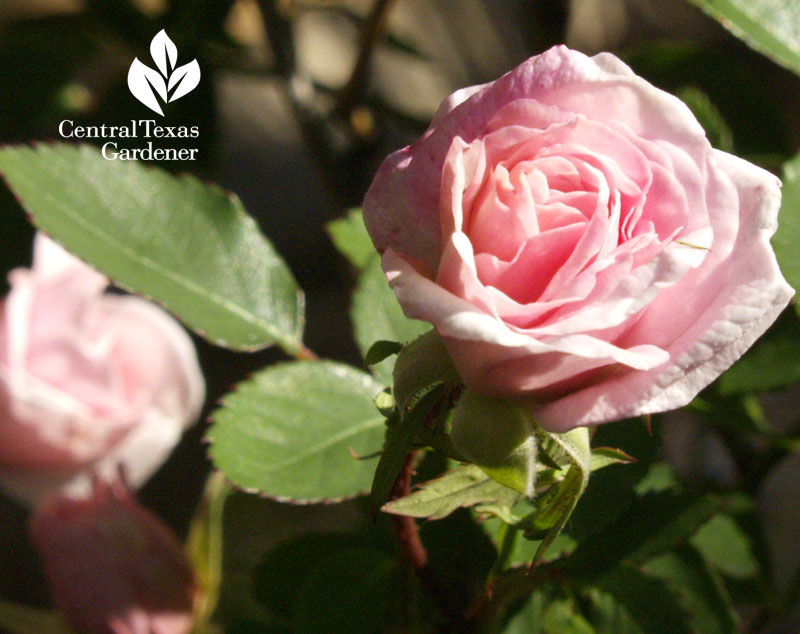
Its sport, ‘Marie Daly,’ was yet another find made by intrepid horticulturist Greg Grant, now stalking plants at Smith County Extension in Tyler.
That’s one of the many delightful stories in The Rose Rustlers, where once again Greg teamed up with former professor and post-graduate mentor William C. Welch, Professor and Extension Texas A&M AgriLife Extension horticulturist.
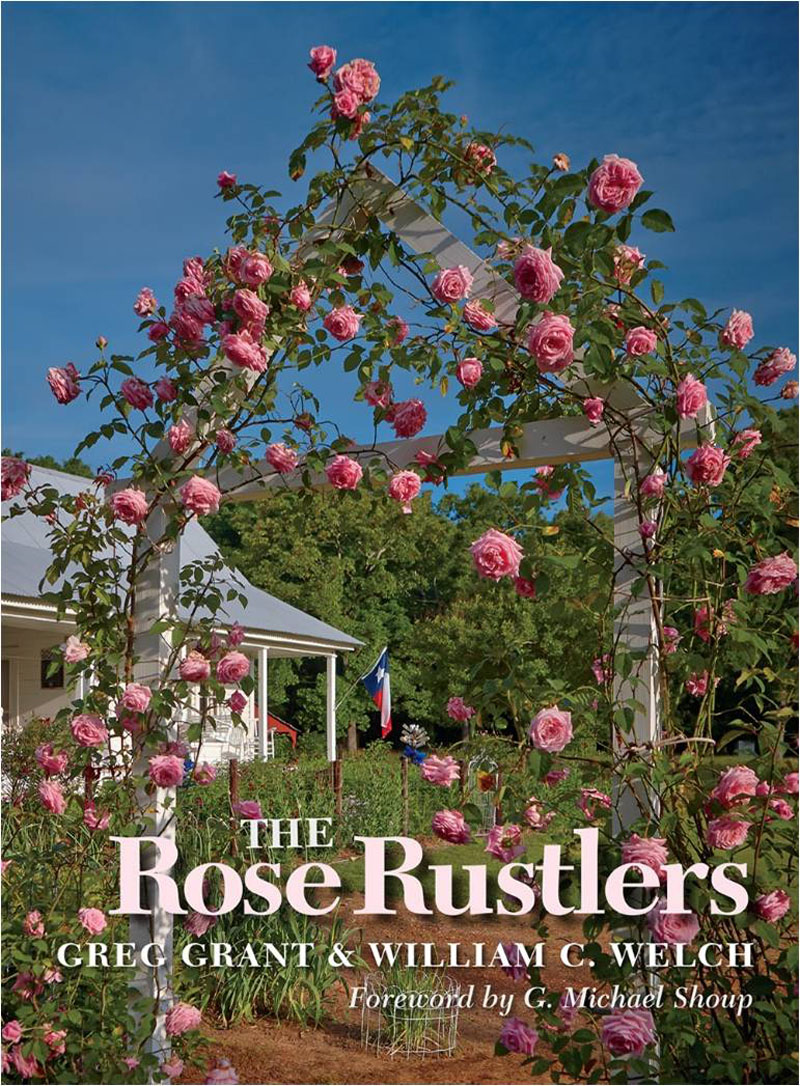
Bill’s been a favorite professor for many of us, thanks to his generous energy to guide our horticultural paths.
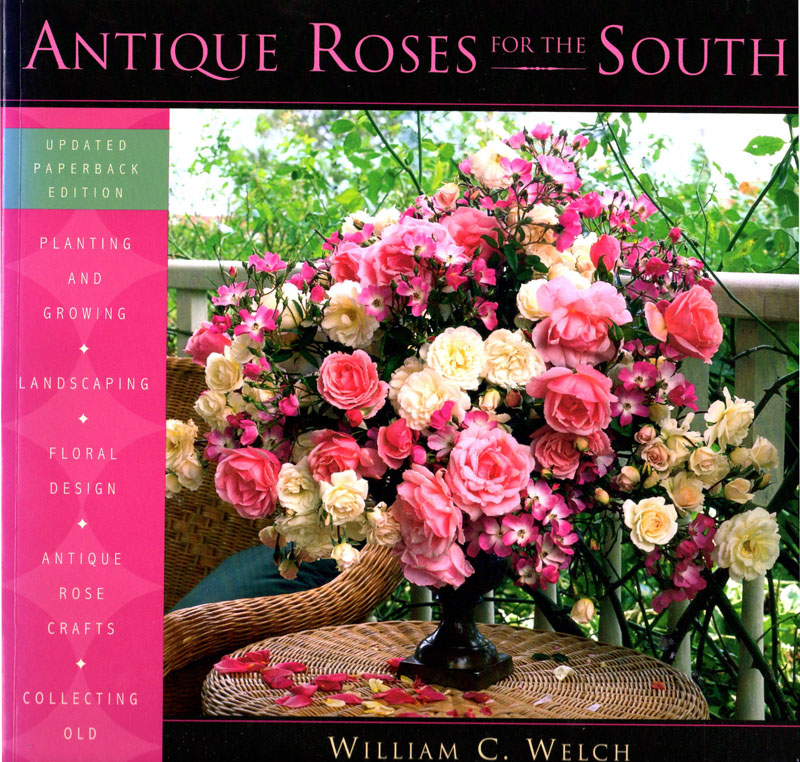
We were thrilled when he returned to KLRU with his inimitable quips and always profound philosophy. Bill rustles up a few tales from The Rose Rustler’s personable stories about how pioneers adorned newfound homes with cuttings from beloved roses.
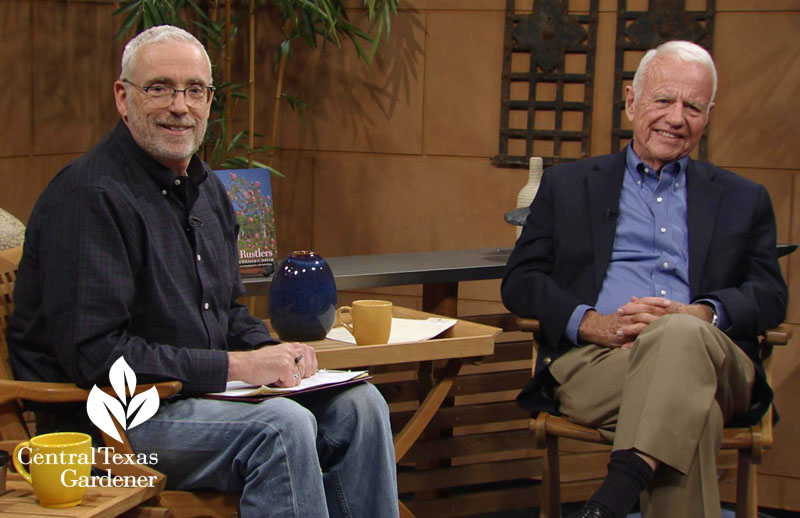
Many have survived without care for decades, remaining nameless until curious horticulturists discovered, identified and propagated them for today’s resourceful gardens. One of Bill’s finds is richly-hued, fragrant ‘Maggie,’ named for his late wife’s grandmother who grew it in her Louisiana garden.
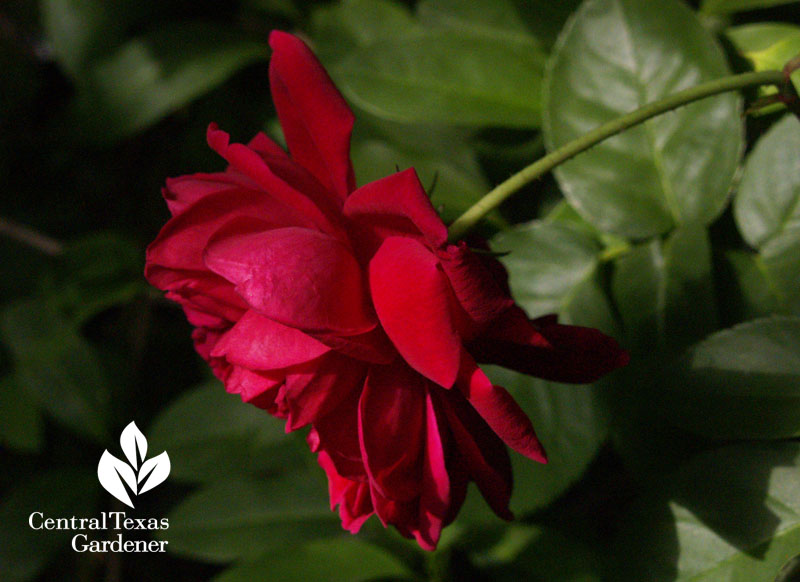
In The Rose Rustlers, Bill and Greg swap poignant and often humorous stories, give us the scoop on the birth of Michael Shoup’s The Antique Rose Emporium, and have us laughing about Greg’s conversion from rose-hater to rose rustler.
Check out Heirloom Gardening in the South, too, for horticultural history and cultivation tips of some of your garden stalwarts.

Greg peppers wit with sweet tales and family recipes to grow your food garden in the Texas Fruit & Vegetable Gardening.

Other keeper plants include native perennial penstemons. Although they’re called beardtongue, I think a more apt moniker is “bee tongue” since bees love them, as do hummingbirds and butterflies.
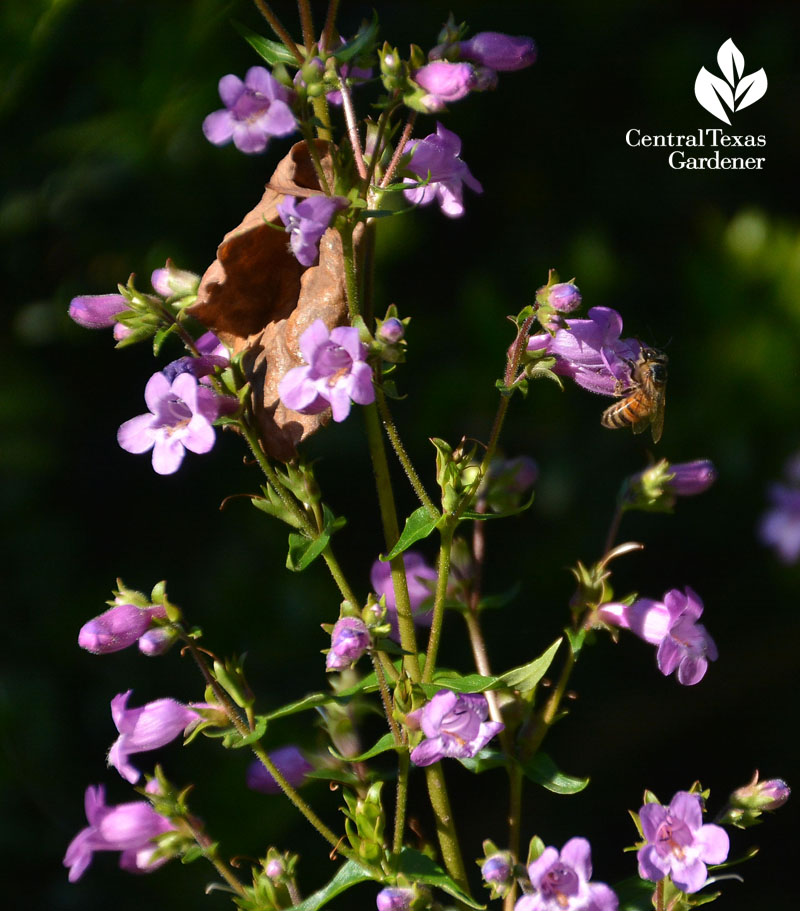
Spring-blooming Brazos (Gulf) penstemon (Penstemon tenuis) handles my heavy soils, though it loves to reseed in decomposed granite to hang out with winecup and Calylophus berlandieri. Note: the Calylophus doesn’t love me back, so I’ve given up on it.
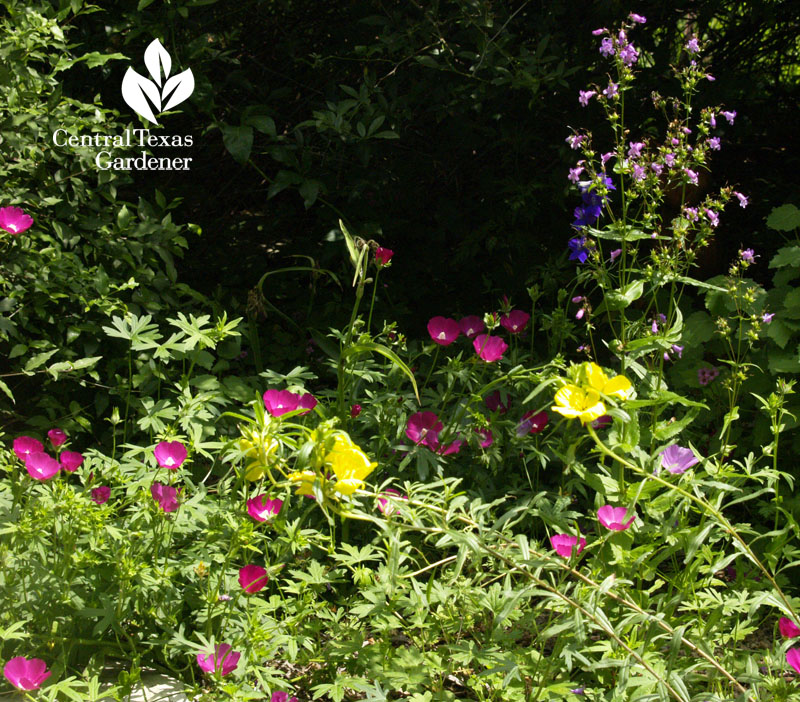
Prairie penstemon (Penstemon cobaea) prefers lighter soil, though I have luck with a few paired with white Salvia greggii. They like sun or at least sun part of the day.
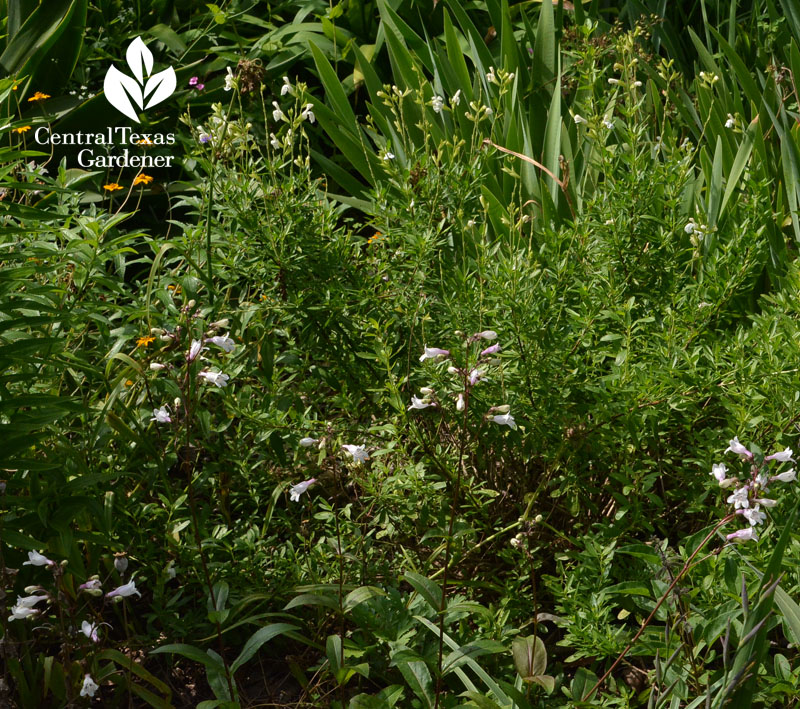
A close relative is Hill Country penstemon (Penstemon triflorus). I spotted this one in a Hyde Park curb garden with California poppy, bluebonnets, and succulents.
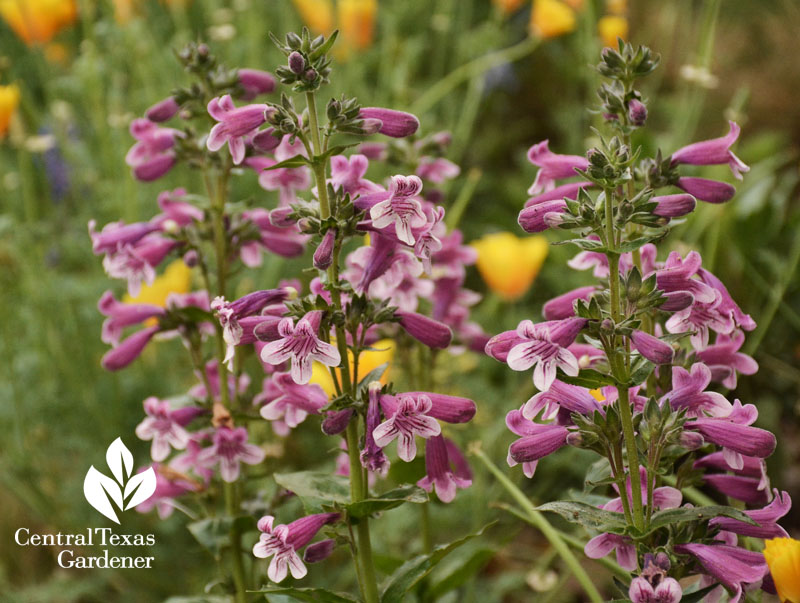
After spring blooming, you can cut the flower stalks to the base. If you want them to re-seed, it can be late summer before they’re totally dried.
Get Daphne’s tips on growing penstemons, including summer-fall blooming rock penstemon for rocky soils and full sun.
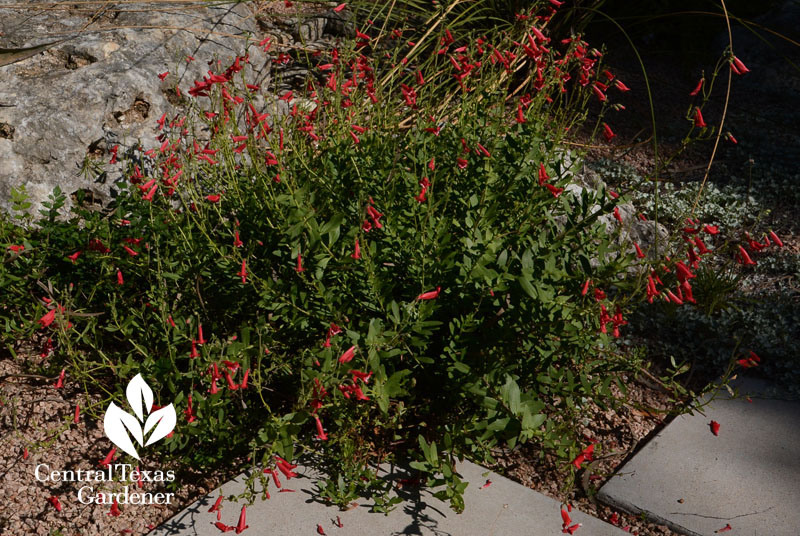
Frugal gardener tip of week: I stash 5-gallon buckets in the shed for countless jobs. But I didn’t realize their true potential until Jeff Ferris performed magic tricks with the least expensive tool you’ve got!

On tour, Syd Teague brings together clever ideas, heritage plants, sexy succulents and artistic design.
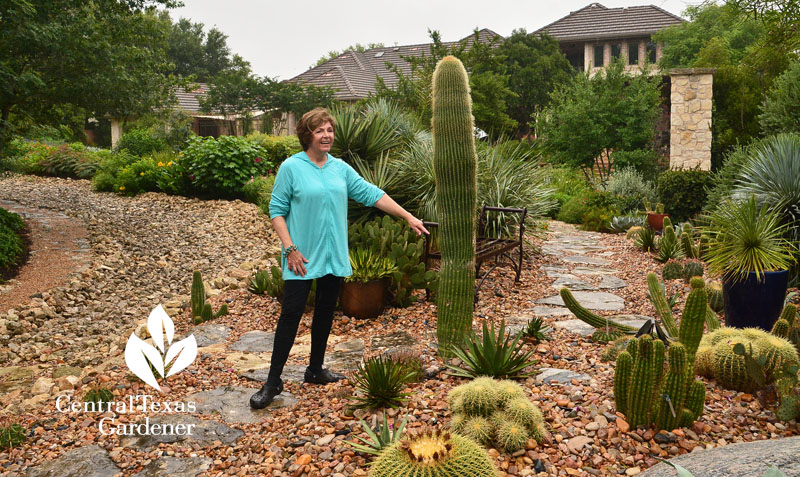
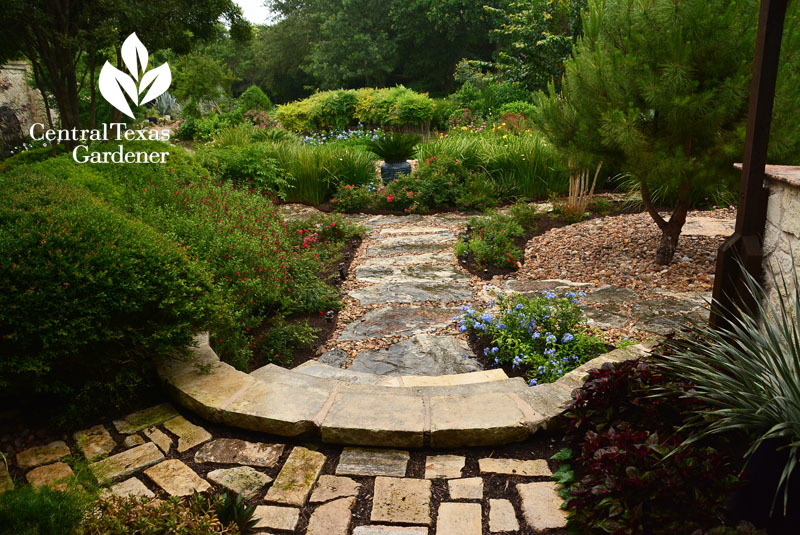
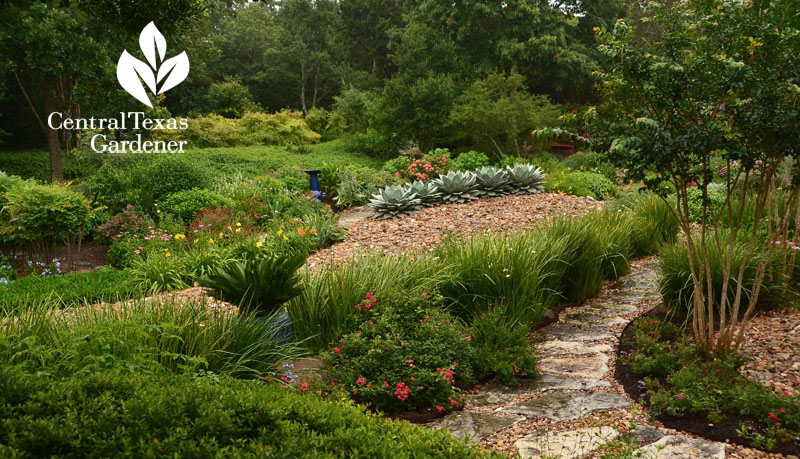
After reshaping her flooding land with dry creek beds and pathways, she personalized each destination in her water-thrifty, wildlife habitat.
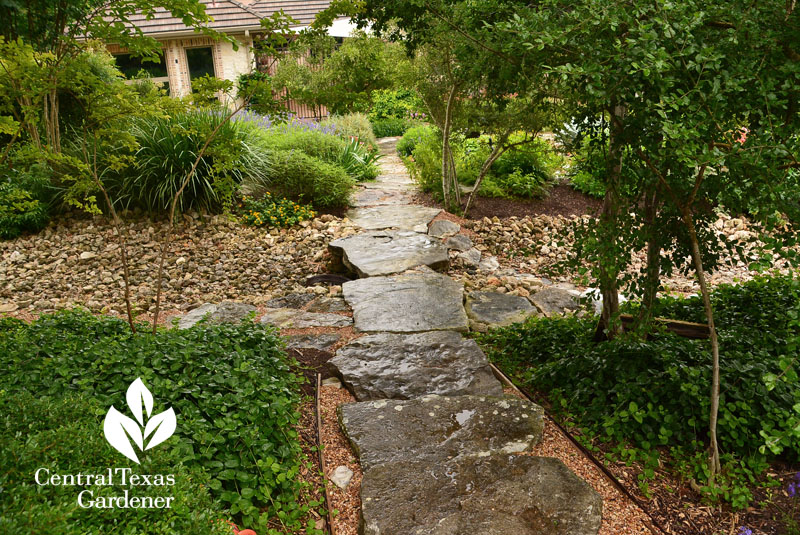
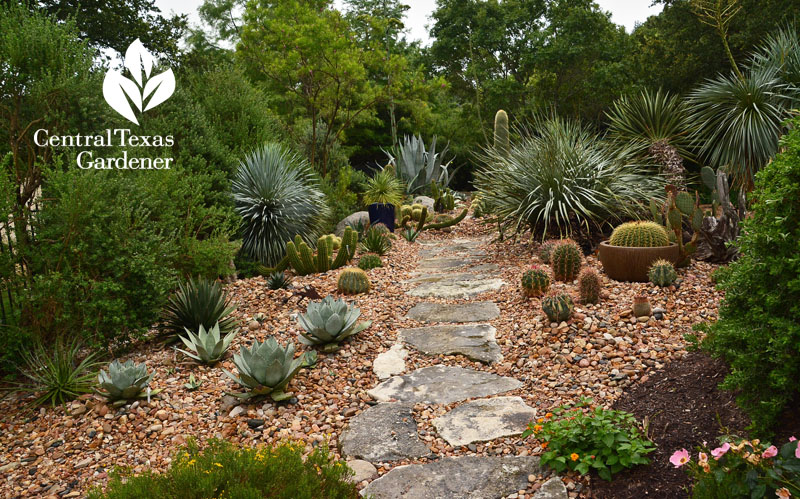
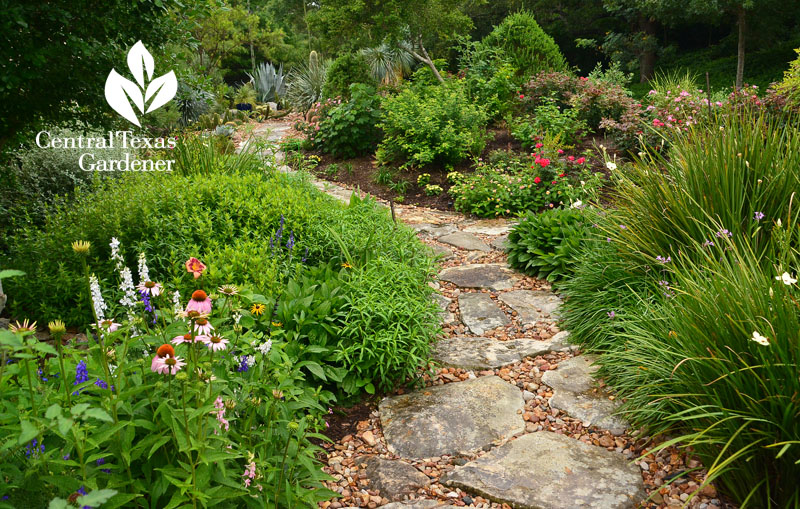
Always eager for new adventures, she and husband Lary Evans now reside in Tucson. As much as they miss this garden, they’re having a blast shaping a whole new perspective.
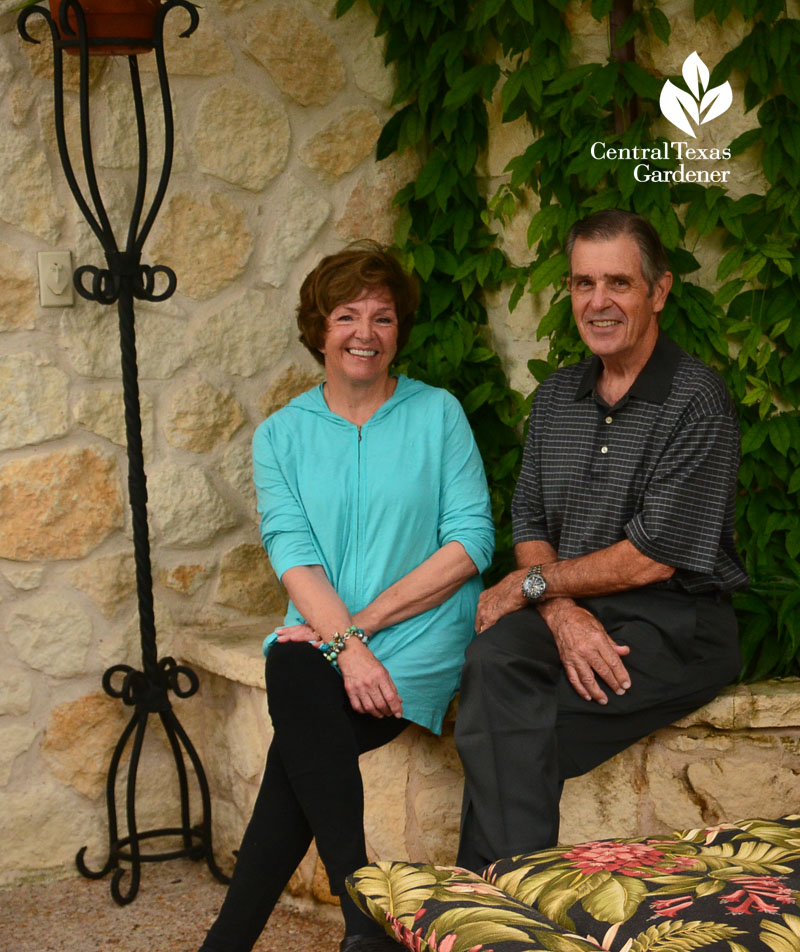
Watch now for Syd’s whole story!
Thanks for stopping by and see you next week for gardens by moonlight! Linda
tags:

